Of Science, Fear, and Nuclear Radiation
For Andrew Maidment, the chief of physics for the Department of Radiology at the University of Pennsylvania, it was one of the oddest phone calls he’d ever received. “A woman called me up once,” he remembers, “and I hear this child screaming in the background, yelling and crying, crying. She starts off with, can I hug my son again?”
Part of Maidment’s job is consulting with patients and occasionally answering strange questions, but this was a new one: “She explains that her son had broken his leg three weeks earlier, and he’d had an X-ray for his leg. And was he still radioactive? She’s so afraid of radiation she won’t hug her kid.” Maidment reassured the woman that any radiation her son had received vanished as soon as the X-ray machine was turned off, and that her child wasn’t radioactive. “She says, ‘so I could have hugged my son right away?’ And I say, ‘yeah.’”
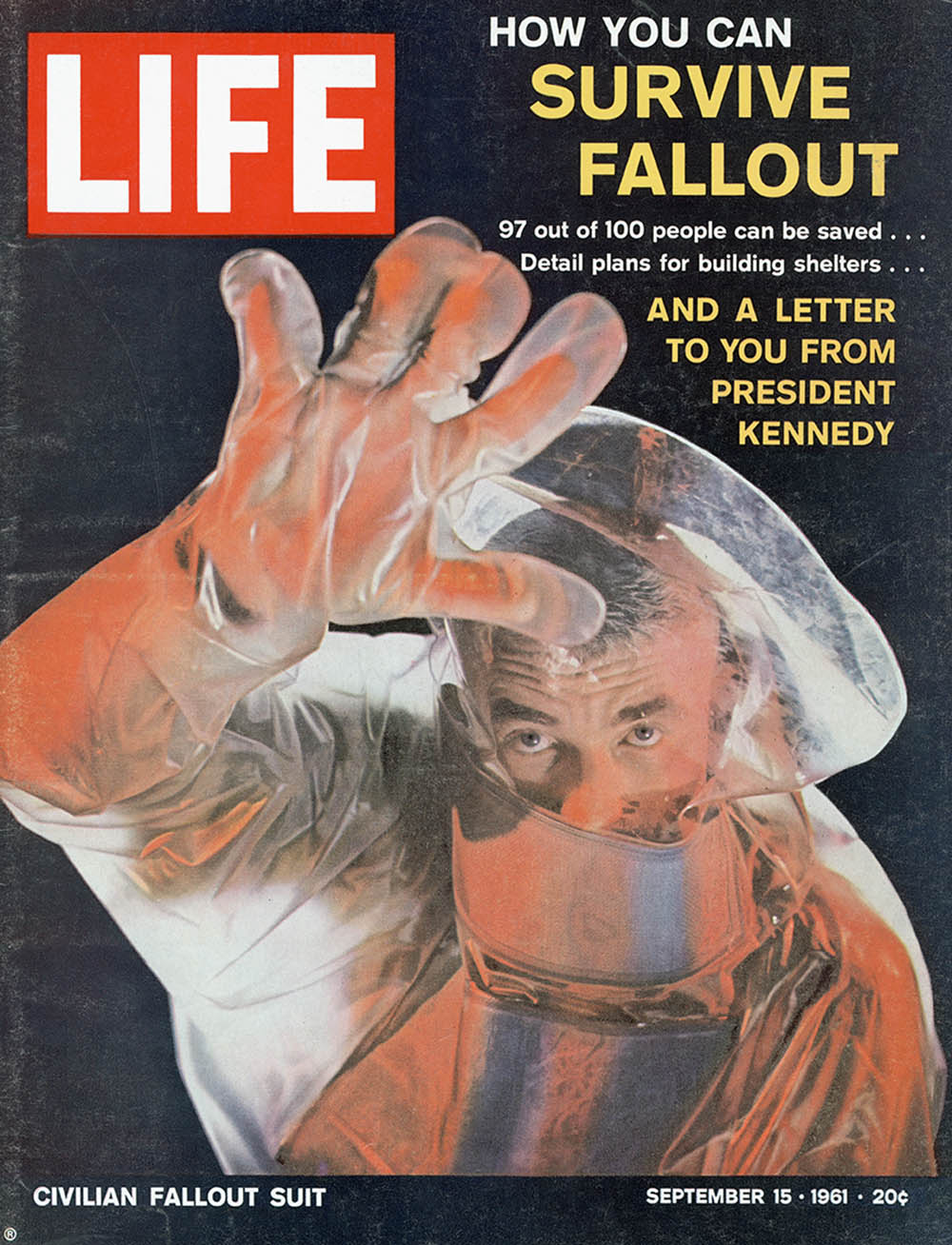
Copy of September 15, 1961 issue of LIFE Magazine: How You Can Survive Fallout.
Visual: LIFE Premium Collection via Getty
It was an example of a phenomenon that scientists and other experts have dubbed radiophobia — the fear of ionizing radiation. Every horror filmmaker worth her fake blood and monster makeup knows that nothing is more terrifying than the unseen: the creak on the stairs, the shadow on the curtains, the hint of fatal evil.
And radiation — a mysterious presence that can’t be felt by our senses — is just such a terror.
This fear has become the default setting for most people — and plenty of experts argue that’s for good reason. Ionizing radiation strips electrons from atoms and molecules, converting them into ions, or charged particles. And in atoms and molecules comprising living tissue, such as DNA, it can wreak havoc. If the intensity and rate of exposure are too great, the organism sickens and can die. This is called acute radiation syndrome, or ARS, and it killed many people in the aftermath of the atomic bombings of the Japanese cities of Hiroshima and Nagasaki in the 1940s. It also took a toll following the nuclear accident at Chernobyl, which was recently revisited, to critical acclaim, in a haunting HBO miniseries. Fortunately, most living organisms rarely, if ever, encounter radiation at such toxic levels.
Crystallizing events like these have reinforced in the popular mind a technical model that today informs the regulation of nuclear radiation the world over. It’s called the “LNT” model, short for “linear no-threshold,” and it holds that at any level of radiation exposure greater than zero, there is some damage to human DNA. The higher the level, the greater the harm. The “linear” part of the LNT refers to the shape of a line graph plotting cancer risk against radiation dose: not a curve, but a straight line beginning at zero and proceeding upward to infinity. According to the LNT model, all radiation doses, however small, are dangerous, and the harm is cumulative over time. Thus, any exposure must be held to what nuclear regulators would call an “as low as reasonably achievable” dose, or ALARA.
To most scientists, regulators, and the public at large, this only makes sense. And yet, an increasingly vocal group of nuclear experts suggests that the LNT model and its zero-sum approach to radiation may well be doing more harm than good. Naturally occurring radiation surrounds us all the time, they point out — emanating up from the Earth itself, and raining down on us from the cosmos. And outsized fear of radiation, they say — driven largely by the LNT framing — does much more than frighten people like the mother who queried Maidment. It drives voters and governments, for example, to abandon or avoid nuclear power — even though its fossil-based alternatives pollute the air and warm the planet, arguably killing far more people each year. (Indeed, according to the World Health Organization (WHO), 4.2 million people die every year from outdoor air pollution — orders of magnitude more deaths than those attributable to all civilian nuclear accidents, and the bombings of Nagasaki and Hiroshima, combined.)
Similarly, the partial meltdown of three reactors at Japan’s Fukushima Daiichi Nuclear Power Plant in 2011 led to mass evacuations that many experts now say resulted in more deaths than the earthquake and tsunami that caused the accident. “Overestimating radiation risks using the LNT model may be more detrimental than underestimating them,” argued researchers Jeffry Siegel and James Welsh in a 2015 article in the journal Technology in Cancer Research and Treatment, “as this approach has resulted in unnecessary loss of life due to traumatic forced evacuations, suicides, and unneeded abortions after the Fukushima nuclear accident.”
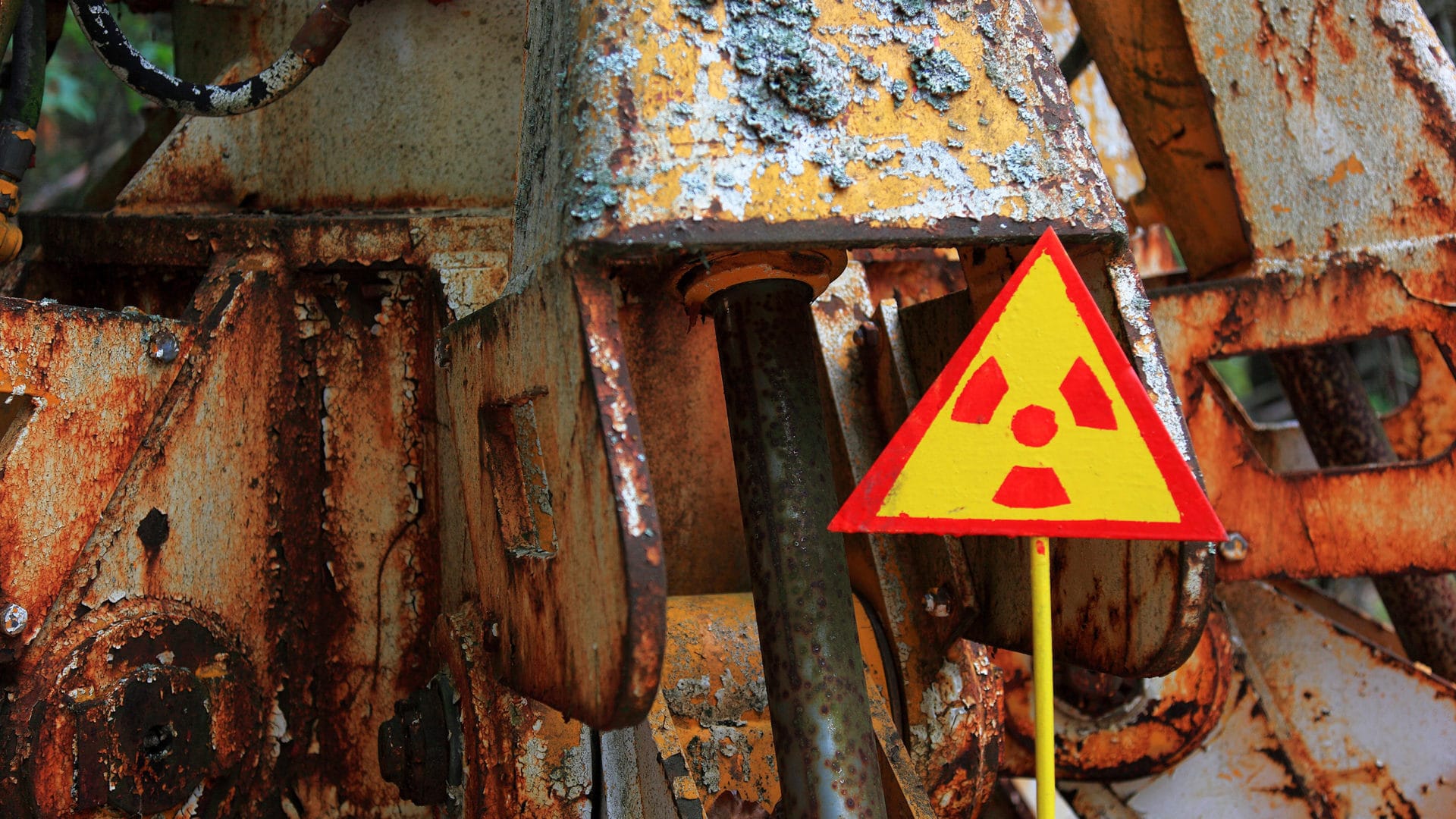
Are they right? Has the no-amount-is-safe approach to radiation — a paradigm that most of us consider so axiomatic that it informs both law and no shortage of fictionalized movie-house nightmares — actually made us less safe? Or, while perhaps technically tenuous, does it nonetheless provide a rational posture, given the potential risks? Jan Beyea, a nuclear physicist and the founder of Consulting in the Public Interest, a firm offering advice and expertise in the biological and physical sciences to nonprofits, universities, law firms, and other groups, suggests those are heated questions indeed. In a May 2012 article in Bulletin of the Atomic Scientists, Beyea wrote: “The debates can be brutal — so much so that, at times, they make the spats between William Jennings Bryan and Clarence Darrow look tame.”
The divisions run deep: “Underlying the [existing] risk models is a large body of epidemiological and radiobiological data,” the Environmental Protection Agency opined in support of LNT in 2011. “In general, results from both lines of research are consistent with a linear, no-threshold dose (LNT) response model.” That assessment was echoed by the Congressionally chartered National Council on Radiation Protection and Measurements (NCRP) in April 2018. Reviewing more than two-dozen recent studies of the effects of low-dose radiation, the group concluded that the results added “substantial weight to the judgment on the use of the [existing] model for radiation protection.”
But Carol Marcus, a radiobiologist and nuclear medicine physician at UCLA who has recently petitioned the U.S. Nuclear Regulatory Commission (NRC) to relax some regulation of low-dose radiation exposures, disagrees. “The LNT,” she declared in her petition, “is based on hogwash.”
Ask most people how many were killed by radiation from the reactor accidents at Chernobyl, Fukushima, or Three Mile Island, and you’d probably get a wide range of answers. The 1986 Chernobyl disaster would no doubt be on top, with estimates ranging from a few thousand to hundreds of thousands. Fukushima, the first nuclear accident to occur during the era of 24-hour cable news and internet coverage, would probably draw estimates anywhere from a hundred up to thousands. And although most of us are aware that a serious disaster never occurred at Three Mile Island in 1979, some would probably guess that at least a few fatalities resulted, with leukemia or thyroid cancer cases manifesting themselves years later.
The actual figures are surprising. Most official sources give a figure of a few dozen deaths caused directly by radiation from the Chernobyl accident, though estimates of projected future deaths from cancer vary widely. That’s partly due to the unreliability and incompleteness of data from the former Soviet Union, as well as the impossibility of distinguishing cancers caused by Chernobyl from those from other causes. Projections range from around 4,000 (from scientific groups affiliated with international agencies such as the WHO and the United Nations) to 100,000 (from environmental organizations like Greenpeace). And while some research suggests that the rate of birth defects increased in areas contaminated by radiation following the meltdown, a lack of data on pregnant women’s actual exposure — along with other confounding factors like alcohol consumption and diet — make it impossible to draw definitive conclusions.
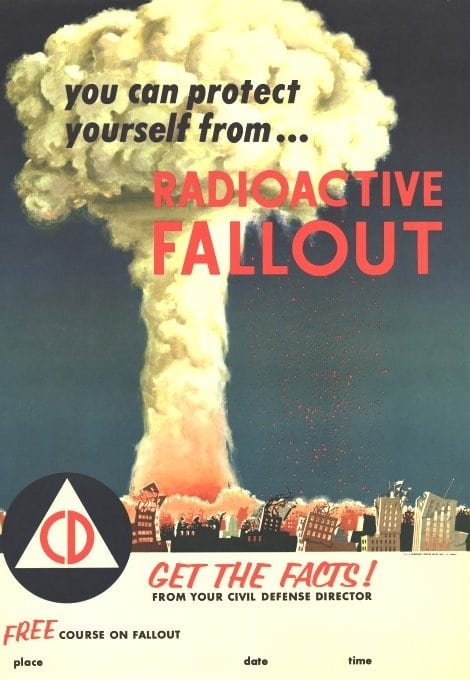
A 1955 poster released by the United States Civil Defense, which preceded today’s FEMA.
Visual: Public Domain
Fukushima is a considerably easier case. At the moment, only one radiation-related death has been reported — a Fukushima plant worker who died of lung cancer first diagnosed in 2016. As for Three Mile Island, there have been no official deaths from radiation.
This chasm between public perception and actual casualty data is a testament to decades of misconceptions, misinformation, and misapprehensions about radiation, reinforced by the relentlessly baleful portrayals in popular culture and the dark shadow of the mushroom cloud. From the earliest post-Hiroshima B-movies, comic books, and pulp novels, the underlying message has been the same: Radiation is bad. It can make humans and other creatures grow or shrink; give them special abilities; or and mutate them into monsters.
Radiation, of course, does none of those things, though it certainly does have devastating effects at high doses. It’s the over-regulation of even low-dose exposures, however, that LNT critics say have done more harm than good — and that have given rise to what they characterize as irrational fears. The major alternative to the LNT model posits the existence of a threshold, or a measurable limit, below which there’s no danger. This reflects the reality that in our daily lives, radiation can never be eliminated, only limited. “Radiation is ubiquitous,” says Chary Rangacharyulu, a physicist at the University of Saskatchewan. Every day, we are bathed in a natural low-level radiation background from various sources: cosmic rays, radon gas, radioactive elements in the Earth, even our own bodies.
Millions of years of evolution have provided earthly life with intricate genetic and cellular mechanisms that, in most cases, can either repair or neutralize damage by causing overly radiated cells to self-destruct. “The basic premise of LNT that any amount of radiation, however small, is harmful, is flawed,” says Rangacharyulu.
Or, as Siegel, Charles W. Pennington, and Bill Sacks wrote in a 2017 article in The Journal of Nuclear Medicine: “The primary LNTH [linear no-threshold hypothesis] fallacy is it excludes this evolutionary biology, ignoring the body’s differing responses to high versus low radiation doses. Low doses stimulate protective responses; high doses overwhelm and inhibit such protections.” In another article, Siegel and Pennington contend that “LNTH-derived policy is as unsafe a practice as shouting fire in a crowded theater.”
A chilling video produced by the Home Office and the Scottish Home Department in 1960 offered civilians advice on how to protect buildings and people from the effects of nuclear fallout.
If the LNT model is as flawed as these critics argue, how did it become the foundation of our regulatory framework, not to mention our cultural attitudes, regarding radiation? The first strong evidence of a connection between radiation and genetic damage came from experiments in 1926 and 1927 by the American geneticist Hermann Joseph Muller. Muller exposed groups of fruit flies to high doses of X-rays at high rates, reporting what looked to be definitive evidence of mutagenesis, or the production of genetic mutations. He eventually won a Nobel Prize in 1946 for this work, claiming in his Nobel lecture that there was “no escape from the conclusion that there is no threshold dose.”
Further research in the interim since Muller’s early experiments, however, suggested that in fact there was a threshold at low doses or exposure rates. It remains unclear whether Muller merely dismissed these new findings as incorrect, or purposely ignored them. Edward J. Calabrese, a toxicologist at the University of Massachusetts Amherst, is the most vocal proponent of the latter view. He argues that close examination of the historical and scientific record proves that Muller was being intentionally “misleading and deceptive,” and tried to “blunt criticism of [his] Nobel Prize lecture and its impact on his reputation.”
But others have responded that Muller was an extraordinarily conscientious researcher and his unequivocal support of the LNT was based on his honest, if imperfect, appraisal of the scientific evidence of the time. In any event, Muller’s Nobel speech helped cement the scientific acceptance of the LNT model, and the 1956 recommendations of the National Academy of Sciences’ Committee on the Biological Effects of Atomic Radiation (BEAR I) made it official. Subsequent NAS committees combined the work of Muller and others on radiation mutagenesis with preliminary analyses of data for Hiroshima and Nagasaki to extend the application of the LNT to carcinogenesis.
This, the LNT’s opponents argue, was a major mistake. The possibility of huge doses of radiation causing genetic mutations in future generations, which was the core of Muller’s work, is one thing; causing cancer in living organisms with low radiation doses over time is quite different. In other words, a high dose of radiation all at once isn’t the same thing as small amounts over a long time.
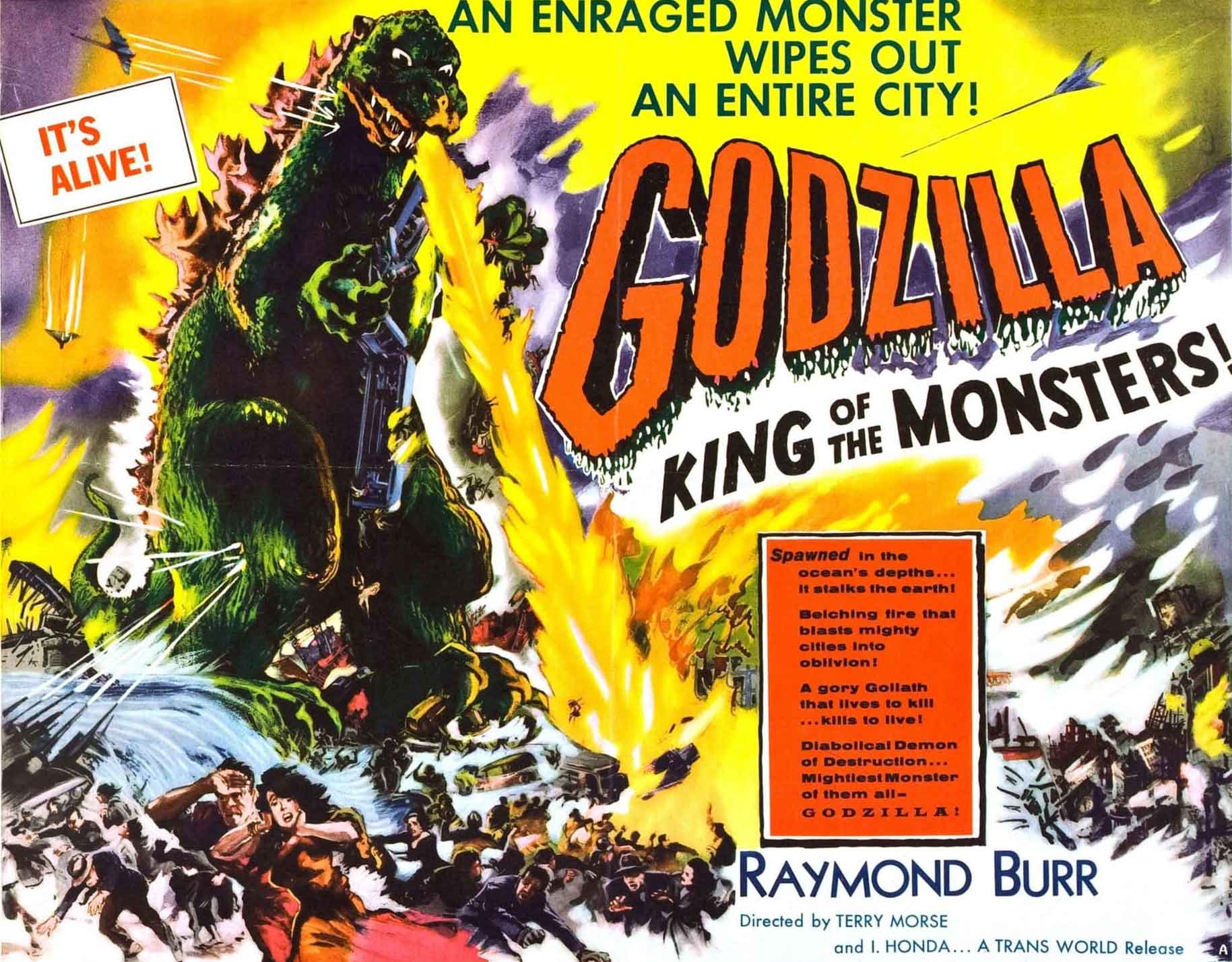
Siegel, Pennington, Sacks, and Welsh have pointed out that “the difference between the lowest experimental dose [used by Muller] and zero dose is huge,” arguing that it’s “unacceptable to simply assume, without further observation,” that there’s some lasting damage all the way down to the lowest dose. As far back as the 16th century, it was recognized that while a substance might be harmless or even beneficial in small amounts, there is a threshold above which it becomes harmful. According to the Renaissance physician Paracelsus, known as the father of toxicology, “Poison is in everything, and no thing is without poison. The dosage makes it either a poison or a remedy.”
Nonetheless, as the New York Times science reporter Gina Kolata noted nearly two decades ago, “the idea that radiation’s effects were directly proportional to its dose caught hold and soon was being used to predict cancer cases.”
In radiation-induced cancers, the issue is the definition of “low dose.” Cellular mutations happen constantly in your body, most often caused not by radiation but by oxygen, and are usually handled quite efficiently by natural cellular repair mechanisms. Yet sometimes damaged cells can elude repair and reproduce imperfectly, perhaps becoming cancerous over time. So at what point does that happen? According to the LNT scenario, once a cell is hit by radiation it’s probably damaged for good, and every future dose of radiation just ups the total bodily harm, possibly resulting in cancer. But if in fact a threshold exists, then it’s only when it is exceeded by too much radiation that there’s a problem.
With most toxic substances, the key question is the dosage or amount of exposure. Some may behave differently at lower doses than at higher ones, but a DDT molecule, for example, remains a DDT molecule, whether in isolation or in the company of a million others. The effects of ionizing radiation, however, are complicated by the fact that there’s more than one type, with each varying in the way it inflicts damage. Radiation comes in several varieties: alpha and beta consist of subatomic particles and can be stopped in their tracks by a sheet of paper or a layer of skin, while gamma radiation and X-rays consist of highly energetic and penetrating photons. All have the ability to ionize atoms, sometimes generating further radiation in the process, making things even more complicated.
A bewildering lexicon has proliferated over the past century to describe and quantify radiation, from “roentgen,” “becquerel,” and “rem” (roentgen equivalent man), to “rad,” “gray,” and “sievert.” Some terms are widely used, while others are obsolete or appear only in certain circumstances. Each has its own definition, based on various factors. Currently, the sievert (Sv) is the unit most often used when considering the health effects of radiation dosages. The inescapable natural background radiation we receive from the environment is about 3 to 10 mSv (millisieverts, or a thousandth of a sievert) a year; a chest X-ray gives about 0.1 mSv; a mammogram, about 0.4 mSv; a CT scan 2 mSv or more, depending on the type.
Most experts place the threshold for cell mutation or cancer at roughly 100 mSv, for a dose from all sources above natural background radiation. The Health Physics Society, an organization of radiation safety experts, says in an official position statement that “radiogenic health effects (primarily cancer) have been demonstrated in humans through epidemiological studies only at doses exceeding 50-100 mSv at high-dose rates. Below this, estimation of adverse health effect remains speculative.”
And yet, the Health Physics Society, along with a large number of other experts, suggests that establishing the precise threshold below which we ought not worry is a slippery business indeed — a fact that argues in favor of maintaining the LNT framing. “The Health Physics Society also recognizes the practical advantages of the linear no-threshold hypothesis to the practice of radiation protection,” the group’s statement continued — adding: “Nonetheless, risk assessment at low doses should focus on establishing a range of health outcomes in the dose range of interest and acknowledge the possibility of zero effects.”
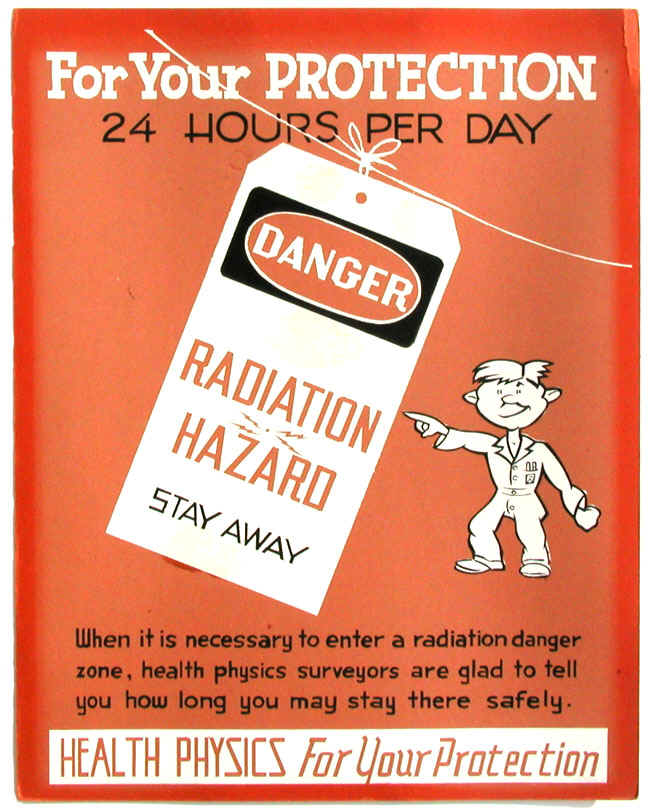
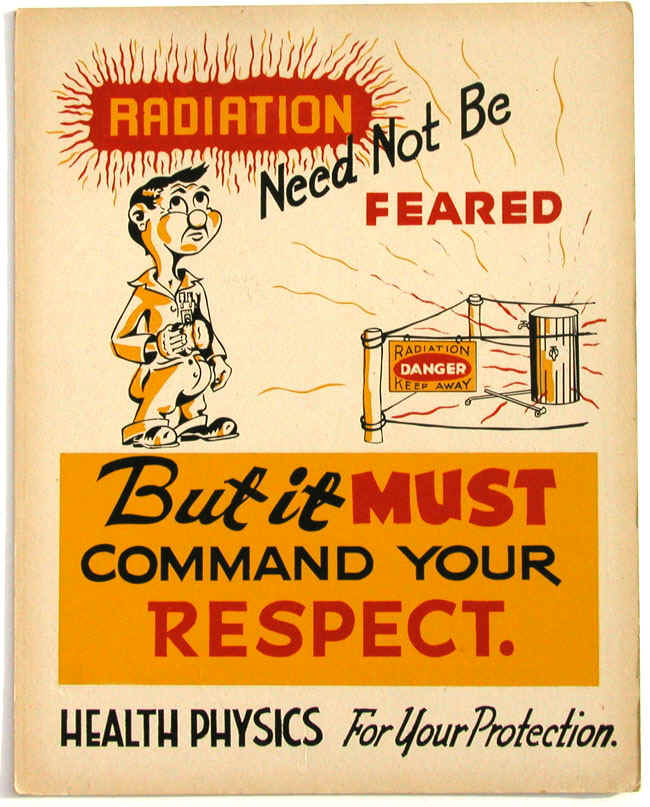
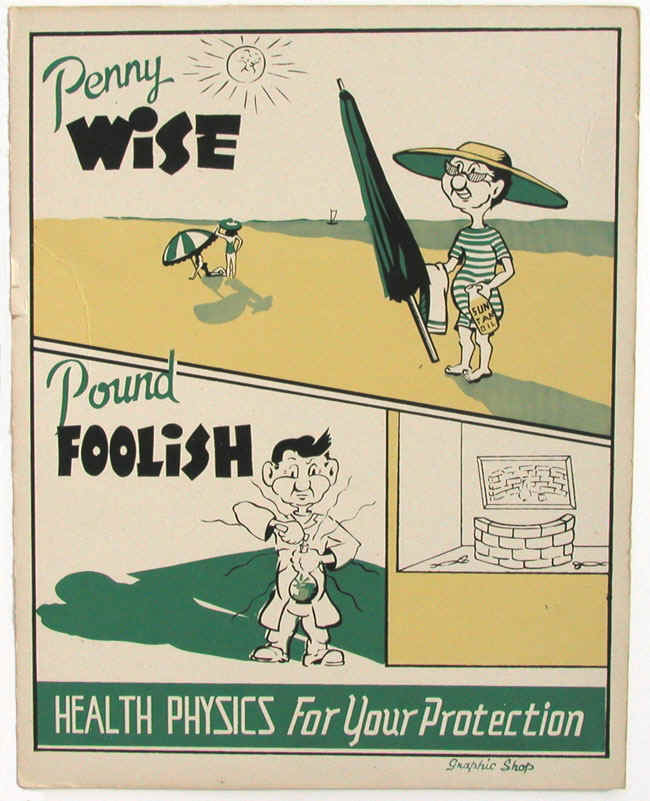
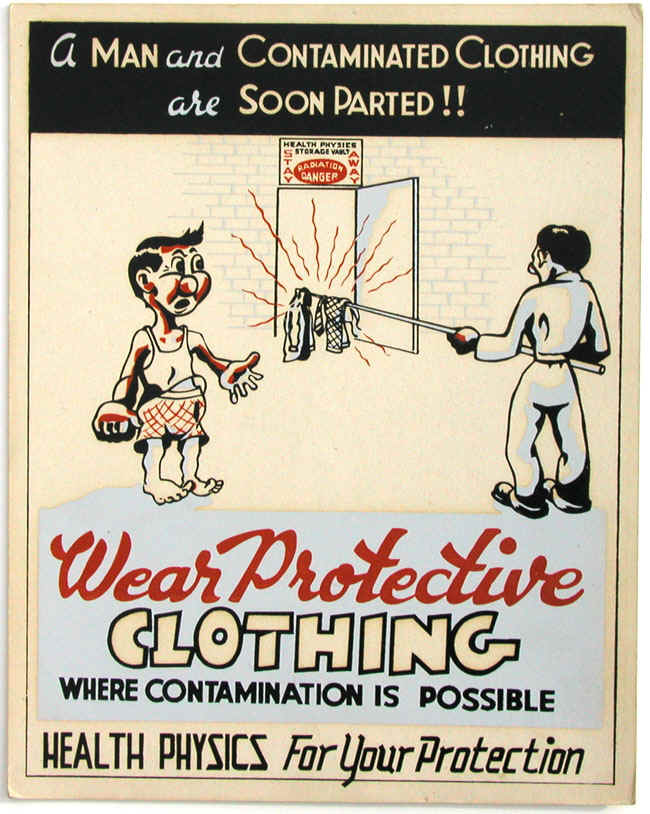
The International Commission on Radiological Protection (ICRP), an independent international scientific body, concurred, stating in a 2005 report that while the “existence of a low-dose threshold does not seem unlikely for radiation-related cancers of certain tissues, and cannot be ruled out for all cancers as a group, the evidence as a whole does not favor the existence of a universal threshold, and there seems to be no particular reason to factor the possibility of a threshold into risk calculations for purposes of radiation protection.”
The National Council on Radiation Protection and Measurements (NCRP), an organization of scientists and other nuclear experts that disseminates information and research data about radiation exposure and protection guidelines, agrees. While not affirming that the LNT is necessarily correct scientifically, the group maintained in a 2018 report that “recent epidemiologic studies support the continued use of the LNT model for radiation protection.”
In a response to emailed questions from Undark, NCRP’s director of science John Boice and Roy Shore, an emeritus member of the organization who formerly worked for the Radiation Effects Research Foundation, or RERF (a joint U.S.-Japan organization focused on studying the effects of radiation on atomic bomb survivors) wrote that “protection from any toxic agent needs to err, if anything, on the prudent side to assure protection, because the available risk data are inevitably too limited to give precise risk values. Therefore, in order for the dose threshold model, which discounts low-dose risk, to possibly be prudent, virtually all the epidemiologic and animal data would have to show no excess risk at reasonably low doses.”
The pair added: “The question is what model(s) approximately reflect the knowledge base available (which is constantly increasing) and also are sufficiently conservative so as to protect human health.
“The LNT model,” they wrote, “meets those criteria reasonably well.”
Since 1956, the BEAR (later renamed BEIR, for Biologic Effects of Ionizing Radiation) committees have met several times to reevaluate the current state of scientific knowledge on radiation. The most recent report, BEIR VII, came out in 2006 and it continues to support the LNT, while hedging its bets. “It is unlikely that there is a threshold below which cancers are not induced, but at low doses the number of radiation-induced cancers will be small,” says a summary report that also acknowledges that competing hypotheses exist, including ones holding that “risks are smaller than predicted by the linear no-threshold model.”
Apart from carcinogenesis, the BEIR VII committee also examined the latest results of RERF’s Life Span Study, which tracked tens of thousands of survivors of the Hiroshima and Nagasaki bombings, as well as their children. They found “a lack of significant adverse genetic effects,” also stating that the risk of inheritable radiation-induced mutations “is sufficiently small that it has not been detected in humans, even in thoroughly studied irradiated populations such as those of Hiroshima and Nagasaki.”
Whether or not Muller’s hugely irradiated fruit flies actually did pass down mutations to subsequent generations, the scientific consensus has been that inheritable genetic damage from radiation has not been definitively detected in higher organisms like human beings. A BEIR VIII report is said to be in the works, though it’s uncertain when it will appear.
In the swirl of all this complexity, it’s easy to understand the appeal of a one-size-fits-all theory like the linear no-threshold model. It not only seems reasonable, but is more politically convenient, allowing legislators and regulators to claim they’re doing everything possible to protect people while avoiding criticism that they’re exposing them to any potential risks. The NCRP came to roughly the same conclusion in its meta-analysis last year, stating that use of the LNT model “is in accord with judgments by other national and international scientific committees, based on somewhat older data, that no alternative dose-response relationship appears more pragmatic or prudent for radiation protection purposes than the LNT model.”
So what’s the problem? Critics of LNT argue that “playing it safe” has turned out to be not so safe after all. The side effects of radiophobia manifest themselves not only with large-scale events such as Fukushima, but also with routine doctor-patient interactions. For physicians and other health professionals, it can be a considerable challenge. “People think that the risk is additive, and it’s not,” Maidment said. “Radiation is like buying a lottery ticket. You buy a ticket and you have a chance of winning. And then the next week, if you want to try again, you can buy a ticket and you have a chance of winning. People think that the more they play the lottery, the better their chances are of winning. But it’s not true.”
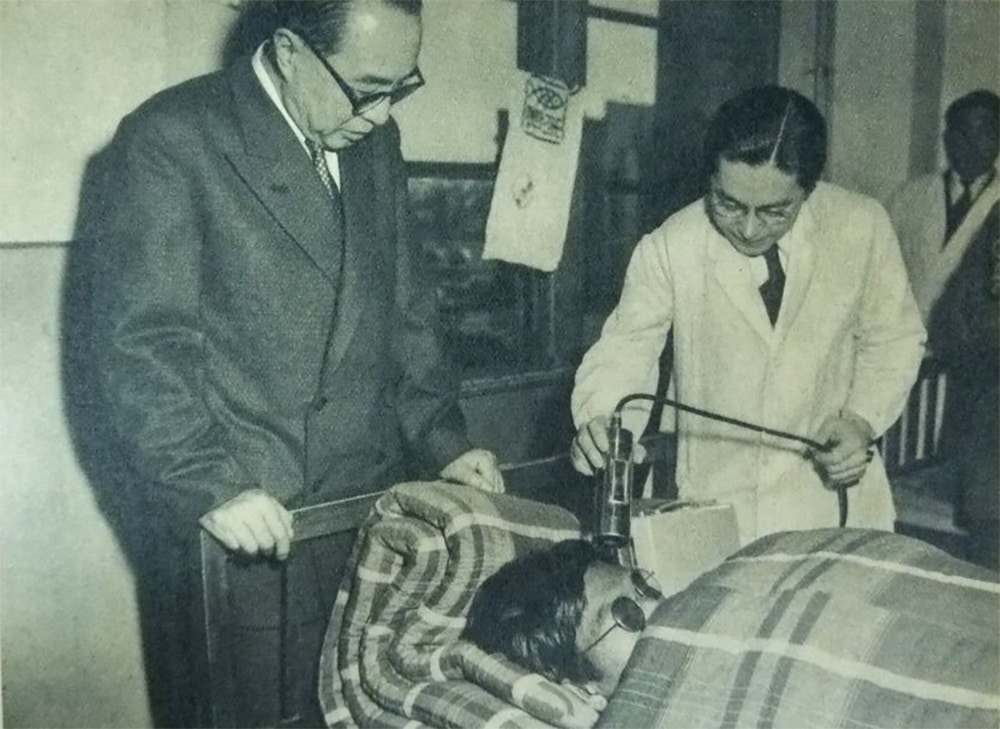
He uses a CT scan as an example. “Let’s imagine the risk is one in a thousand. So people think that, well, if I have two CT scans, my risk is now one in 500. If I have 10, my risk is now one in 10. But it’s not like that. The first CT scan had a risk of one in a thousand. You either got cancer from that CT scan or you didn’t.”
“The other thing that people never put into this equation is the benefit,” he adds. “Risks should be considered in light of benefits.”
He notes that in the days before CT scans, exploratory surgery was the only means to get a detailed view of many internal injuries and disease conditions. “They’re cutting you open to look inside you to make sure everything was O.K. You could die of anesthesia. You could die of infection. You had a scar forever. Now you stick yourself into this donut for 15 minutes and we have a relatively definitive answer. That’s an incredible benefit for a theoretical risk years in the future. And if you get a cancer 30 years from now, we can detect it and we can probably treat it with medicine that’s 30 years better than it is today.”
The NCRP’s Boice and Shore observe in their emailed replies that “small doses evoke fears that are disproportionately higher than the potential risks from the low doses. Some scientists or health workers of questionable legitimacy stoke those fears by exaggerating the effects of low-level radiation in public forums and writings.”
On the other hand, they add, many radiation scientists recognize that any excess risk of cancer at very low doses would be so small as to be undetectable. “People encounter much larger immediate risks (e.g., from auto accidents) in everyday life,” the pair wrote.
There’s no way to know how many people have suffered or died needlessly as a result of refusing diagnostic imaging tests or radiation therapy, but the details attending events like Fukushima are somewhat easier to evaluate. As a 2018 study on nuclear power from the MIT Energy Initiative remarked, “the evacuation experiences following the Fukushima nuclear accident have shown that current emergency planning and evacuation requirements in all likelihood do not correctly balance the risks of large-scale evacuations with the health risks of low-dose radiation exposure.” Despite the lack of a large number of radiation-induced casualties at Fukushima, more than 1,600 evacuation-related deaths were recorded. “Causes of indirect deaths include physical and mental stress stemming from long stays at shelters, a lack of initial care as a result of hospitals being disabled by the disaster, and suicides,” according to The Japan Times.
The 2015 report on Fukushima by the director general of the International Atomic Energy Agency stated that “no early radiation induced health effects were observed among workers or members of the public that could be attributed to the accident.” The United Nations Scientific Committee on the Effects of Atomic Radiation (UNSCEAR) found that “no discernible increased incidence of radiation-related health effects are expected among exposed members of the public and their descendants,” and concluded that the true public health damage of Fukushima was psychological: “The most important health effect is on mental and social well-being, related to the enormous impact of the earthquake, tsunami, and nuclear accident, and the fear and stigma related to the perceived risk of exposure to ionizing radiation. Effects such as depression and post-traumatic stress symptoms have already been reported.”
Such psychological scars can impact lives as surely as physical effects. “Precisely because damage from very low-level radiation cannot be detected, people exposed to it are left in anguished uncertainty,” reporter Andrew Revkin observed in a post on The New York Times website. “Many believe they have been fundamentally contaminated for life. They may refuse to have children for fear of birth defects. They may be shunned by others who fear a sort of mysterious contagion.”

Alarmed by sometimes inaccurate media coverage of Fukushima — a group of scientists and medical professionals created a website and eventually an independent group called Scientists for Accurate Radiation Information (SARI) to counter the LNT model. In 2015, SARI member Carol Marcus formally petitioned the Nuclear Regulatory Commission for changes in the federal radiation protection standards currently based on the LNT model, including abolition of the “as low as reasonably achievable,” or ALARA dosage standard.
The petition argues that thousands of scientific papers show that the LNT is in error, claiming “the attitude of today’s regulators is reminiscent of the Catholic Church at the time of Galileo.” And that, the petition argues, has real-world consequences. “Use of the LNT assumption enables regulators to feel justified in ratcheting down permissible worker and public radiation levels, either through actual dose limits or use of the ‘as low as reasonably achievable’ (ALARA) principle, giving the illusion that they are making everyone safer (and creating ever-increasing workload for themselves and their licensees).” In other words, the LNT theory imposes undue regulatory burden — and costs — on all things involving potential radiation exposure, from medical equipment handlers and nuclear power plant operators to crews working to clean up sites contaminated by nuclear materials.
“The LNT model is more like a religion than anything else. It certainly isn’t science,” Marcus’s petition continues. “Imposing it upon the citizens of the United States must stop.”
Four years later, the NRC has yet to respond to Marcus’s petition, but the response to her and other members of SARI from elsewhere has sometimes been withering. One of the most active opponents of LNT critics has been Beyea, the founder of Consulting in the Public Interest. He has sharply criticized Edward Calabrese’s charges of Muller’s scientific misconduct, and pushed back against the anti-LNT contingent in various other forums.
“My position is that there is uncertainty at those low doses, and it can go up or down,” he says. “We do not know really what’s going on down at low doses. There’s a lot of uncertainty and I believe that policy should be based on that uncertainty.” In his May 2012 article in Bulletin of the Atomic Scientists, he argued against the anti-LNT notion of a threshold below which there’s no effect: “A completely zero response is unlikely, given the heterogeneity of human populations, including differing immune and repair systems among people. However, a quasi-threshold, with a dose response below 0.1 Sv, is a standard theoretical possibility … demonstration of a quasi-threshold would be unlikely to assuage those who abhor radiation-producing technology on existential grounds, but it might eventually affect regulations and overall opinion.”
One point on which both hardcore LNT supporters and LNT critics seem to agree is the maddening uncertainty that creeps in at low doses of radiation. As Beyea says, “When you look at the population, you’re averaging over a wide difference of genetic makeup within the population. So that’s what radiation protection has to deal with. We don’t know all the genetic factors and who responds which way. Some people are hypersensitive, some people are insensitive. We have to look at the average over the population.”
Some have also noted that some SARI members are guided by the view that not only are low levels of radiation harmless, but may in fact be beneficial — a controversial and competing theory of radiation exposure impacts known as “radiation hormesis.” Others characterize SARI and its membership as “fringe” advocates, many of whom have somewhat troubling connections to industry. Relaxing radiation exposure standards would, after all, be a substantial boon for nuclear power and other radiation-related industries, which would no longer have to take costly steps to limit the exposure to workers and the public.
Such were the implications of a lengthy investigation published by the nonprofit Center for Public Integrity (CPI) in February, which noted that anti-LNT advocates had been gaining influence and audience within the administration of President Donald J. Trump. Success on this front, the CPI report argued, could mean “vast savings for radiation-reliant industries, allowing them to install new medical equipment, deploy new types of nuclear reactors, open or enlarge facilities for making key nuclear weapons components, and continue the clean-up of contaminated nuclear sites without undertaking such expensive precautions to limit radiation exposure to workers, patients, and the public.”
Whatever the truth of such accusations, anti-LNT advocates argue that the generalized fear of radiation has had consequences that are too-often overlooked. One example: A quiet momentum in favor of nuclear power as a zero-carbon supplement to renewable energy sources in the fight to mitigate climate change had been slowly building over the past couple of decades, invigorated by the urging of climate scientists like James Hansen and environmentalists like Stewart Brand and James Lovelock. But following Fukushima, nuclear power was all but eliminated from the conversation as a workable alternative energy choice, especially in the United States and other leading carbon-producing nations.
“Without nuclear power,” Hansen has argued, “it will be even harder to mitigate human-caused climate change and air pollution.” Furthermore, as he wrote in The Boston Globe last year, “the notion that renewable energies and batteries alone will provide all needed energy is fantastical. It is also a grotesque idea, because of the staggering environmental pollution from mining and material disposal, if all energy was derived from renewables and batteries.”
Other critics have pondered the potential impacts of public panic over a so-called dirty bomb. Certainly, an actual nuclear detonation in an American city would kill many people and cause billions of dollars in damage, but building a nuclear weapon and smuggling it into a city would be enormously difficult and expensive. All that’s needed for a dirty bomb, on the other hand, are a conventional explosive device and some low-level radioactive material, both far easier to obtain than the highly enriched fuel needed for an actual nuclear bomb.
A dirty bomb might blow up a building or a block, killing several dozen in its initial blast. But because it weaponizes radiophobia, its psychological impacts, some analysts have argued, would far outstrip the physical damage by orders of magnitude. “Should such a weapon go off in a city, much of that city will be shut down, and major areas evacuated,” the risk perception consultant David Ropeik writes in Scientific American. “Tens of millions of people in the wider surrounding region, especially downwind, will be afraid. The economic costs will be vast. So will the health effects — not from radiation, but from the sweeping physical impacts of stress, including cardiovascular risk and weakened immune systems.”
For such reasons, Beyea emphasizes that the social fallout of radiophobia needs to be addressed. “I feel that we are completely dropping the ball on social science research here,” he says. “If we have a terrorist attack, if we had a dirty bomb, you’re going to be face to face with this lack of trust, lack of confidence, lack of knowing what to do, what to say.” Part of the solution, he added, would be depoliticizing the discussion over LNT. “I feel there needs to be more respect between the various proponents,” Beyea said, noting the frustrating lack of definitive answers and the passionate feelings on all sides. “I think that we need to recognize that there are arguments on all sides. I don’t think that politicization is helpful for anybody.”
Perhaps the linear no-threshold model made sense in the 1950s, anti-LNT advocates say — particularly in light of legitimate concerns about fallout from atmospheric nuclear testing and a lack of knowledge about the existence of DNA repair mechanisms. But that’s no longer the case. “Current radiation protection concepts should be based on facts and on concepts consistent with current scientific results and not on opinion,” according to a 2009 paper in the journal Radiology, which cites studies on DNA repair and various other work supporting a revised threshold model.
That might involve reconsidering and revising regulations to better reflect our improved understanding of molecular biology since Muller and BEAR I, while continuing research into the biological effects of low-level radiation. The 2018 MIT study on nuclear energy offers what could be a reasonable middle-ground proposal between the LNT and anti-LNT positions, recommending studying the feasibility of “establishing an annual dose below which radiation exposure is not regulated,” noting that such a dose “is not necessarily a threshold below which no health effects occur; rather it is a dose below which health effects simply cannot be identified in the presence of other health risks.”
For their part, the NCRP’s Boice and Shore suggested that providing guidance for a “below regulatory concern,” or BRC, dose that agencies might be able to incorporate into their rule making would not be a bad thing. “If well crafted, they wrote in their response to Undark, “an approach defining BRC could be beneficial, as it would help alleviate over-regulation of exposures.”
Still, that might be a bridge too far for some people — particularly those who believe in the precautionary principle, which in this case would dictate that where the impacts of low-dose radiation are uncertain, the safest thing to do is assume the worst.
Maidment, who routinely deals with the limitations of the LNT, doesn’t necessarily dismiss that notion out of hand, though he believes that the world nonetheless needs a better biological model of risk. “So that we can say, what’s the risk of the CT scan or the coronary bypass procedure or what have you, and we don’t have those today,” he said. “And so we have to fall back to the best model, and that’s LNT, because we don’t know any better.
“It’s the model that has the least assumptions,” Maidment added, “but it should be used with a one-pound box of salt.”
Mark Wolverton is a science writer, author, and playwright whose articles have appeared in Undark, Wired, Scientific American, Popular Science, Air & Space Smithsonian, and American Heritage, among other publications. His latest book “Burning the Sky: Operation Argus and the Untold Story of the Cold War Nuclear Tests in Outer Space” was published last November.









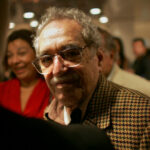
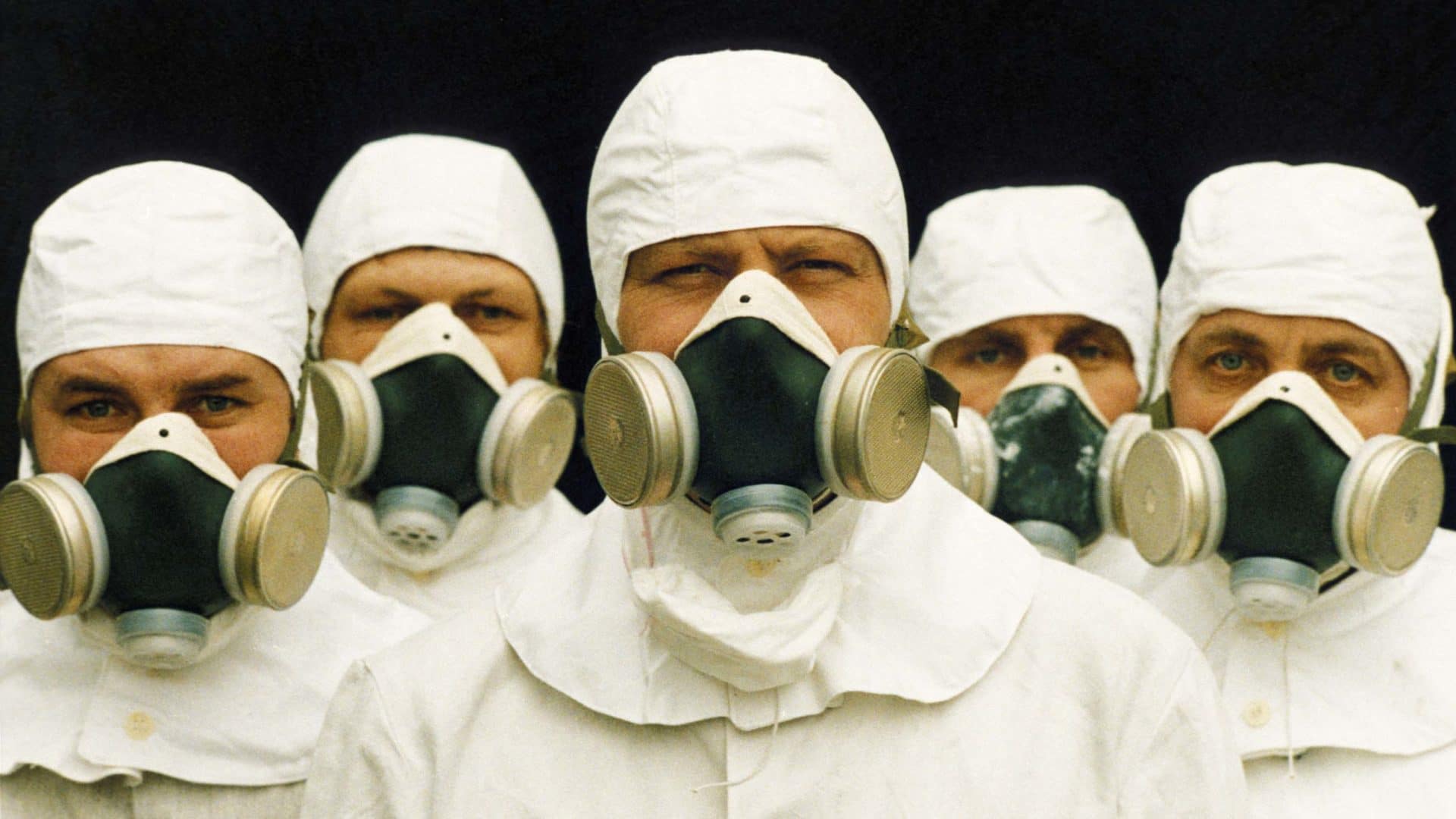

Comments are automatically closed one year after article publication. Archived comments are below.
Radiation is the biggest threat to humans than nuclear, terrorism, or circumstances change. If we do not work fast and change our manners and our stupid needs. We are certainly not going to leave this planet a better place for coming ages.
There are reasons to be nervous of ionized radiation it’s not over reacting in my mother case. She a breast cancer survivor. She had radiation therapy 20 years ago she’s now 87 yrs old. Since she was first diagnosed she’s been out threw many ct scans, numerous mammograms, nuclear bone scans, nuclear stress test, procedures under fluoroscopy, whole body pet ct scans etc. More then anyone should ever have or so I think. She’s been injected with 3 different radioisotopes at least a couple of them numerous times. October of 2014 mom had to be hospitalized she had a whole body pet ct scan approximately 10 days prior. She had bled from her intestines her blood count had dropped to the point she had to have transfusions. Her legs appeared to be sunburned. She was disoriented and confused. Her eyes were black like a dark worm hole, her hair came out by the handfulls, etc….she was really messed up. Her stomach showed high numbers of helocabacteria that had colonized in a few areas of her stomach. The doctor’s had done an endoscopy on her and took biopsies from her stomach. At one point after the transfusions her blood count came up but 8 days later when they discharged her wanting her to go to a rest home for care her blood counts were back to where they were when she was admitted. Except now her absolute lymph count had severely dropped. She had been given a poor prognosis. It’s only by the grace of God she survived. Now she has I believe all the long term effects of radiation poisoning. She has more cumulative radiation exposure then I want to say. Her oncologist has lied and made up office appointments exams on paper making it as if he had seen her right after she was released from the hospital. But he didn’t fir over a year. He stayed that at this time it was not necessary for her to have any further imaging test donto her present condition. He knew she had radiation poisoning and didn’t speak up in fact 12 doctor’s seen her and when I brought up what I felt had happened they didn’t want to hear it.
My dad had numerous ct scans and pet ct scans he’s lungs were full of candida albicanus. He death certificate different but I was their with him I believe he died from septicemia post radiation exposure.
I believe all the ionized radiation were exposed to is killing us. Back ground radiation is one thing that we can’t get away from. But I don’t think people have a clue just how much they are exposed to. Look at the space station it was it is covered with microbes. I believe all the nightmare bacteria and all the auto immune diseases that so many if us have aren’t because of us over taken antibiotics or because if our genetics. I think it’s the radiation exposure that’s altering everything making bacteria resistant to the newest antibiotics they make and it causing all these diseases in us.
Just my opinion.
Point taken. But we don’t have to wait for Generation IV reactors for non-electric safe shutdown. Generation 3+ is already here. Westinghouse model AP-1000, at Sanmen, China.
Nailed it! The LSS is proof positive that LNT is BS.
Mark, A fabulous piece on a thorny topic. Great job noting the trade offs in risk and benefit resulting from what many say is an excessive fear of radiation in general, regardless fo whe3ther LKNT holds. I’ll be sharing it widely.
My only criticism is the lack of information about the findings from the Life Span Studies to which you only briefly refer. Unlike the speculation about the effects of various doses of various types of radiation on which the LNT argument is based, the LSS followed 86,000 actual people – the hibakusha — the survi of atomic bombs, who were exposed to various doses of various types of radiation, both at the moment of the detonation and for weeks and months afterward via fallout. From this much firmer research, following this cohort for now more than 70 years (including their offspring) we know that even at the highest doses the carcinogenicity of ionising radiation is weak; the lifetime cancer mortality rate in the entire group went up slightly less than 1% compared to 23,000 unexposed Japanese followed as a control group. It is also from the LSS that we know that below 100 Msv, no increase in any disease associated with radiation exposure can be detected against normal rates. To me, the LSS is the strongest evidence out there for how minimal the actual risk of radiation is, especially at low doses. And While Dr.s Boice and Shore note this, and how NCRP and others hold to LNTY as a precautionary position more than one based on hard evidence…the LSS powerful confirms it. In my writing I try to give that evidence more emphasis, as it lies at the heart of all of this That said..GREAT piece.
Excellent, well researched article.
It’s only missing a connected, follow-the-money analysis. As Wolverton points out, altering the No Threshold paradigm might lead to a boom in nuclear energy projects. If regulatory agencies, emergency planners and the general public accept the fact that SOME radiation can be accepted without causing measurable harm, acceptance will increase and the zero CO2 nature of the technology will help some see it as an important tool.
The losers if such a decision is made are not well meaning people like Beyea, Boice and Shore. They are the deep-pocketed interest groups who are tied to the current Hydrocarbon Economy. If nuclear energy grows rapidly, that growth will come with reduced sales of coal, oil, natural gas, wind, solar, biomass, hydro and geothermal energy. Entities that supply those fuel and power sources will either lose sales or suffer from increased expenses related to creating supporting products for nuclear power. Banks that carry the debts of hydrocarbon entities on their books as assets may need to reevaluate their stability.
Hydrocarbon interests were clearly warned in 1930 by Sir Arthur Eddington about the potential existential threat of “sub-atomic energy.” Key decision makers in the oil-dependent Rockefeller Foundation steadily supported Hermann Muller’s radiation research for decades. They directly intervened in his employment searches at least three times during his career. They provided him with generous long-term grants at the end of WWII and then gave an even more generous grant in 1956 after publication of the BEAR 1 report claiming that every dose of radiation cause irreparable harm.
The LNT didn’t gain rapid acceptance by being remarkable by being an intuitive breakthrough. It gained worldwide acceptance and regulatory agency dominance by being cleverly and effectively promoted by people with strong financial interests in slowing the development and acceptance of a formidable energy supply competitor.
Rod Adams
Publisher, Atomic Insights
Herman Muller was extremely vulnerable to being suborned by the Rockefeller Foundation, given that he was a 56-year old with a young wife and 2-year old daughter to support, and no pension and poor job prospects (due of frequent moves and job changes resulting from his socialist beliefs: in the ’30s he had lost his job at UT Austin for contributing to a unauthorized communist publication called “The Spark”).
Even so, I suspect the financial backing was not the Rockefeller Foundation’s strongest power play with respect to Muller: that would have been when they pulled the strings of the Nobel Committee to arrange for Muller to win the Nobel Prize in spite of the basic flaws of his research (for example that the _lowest_ non-control dose of radiation in his experiments was sufficient to kill a human being). While bribery only gives you control over someone in the short term (as next time they could either get greedy or develop a conscience), _blackmail_ gives you control in the long term. And what better way to blackmail a scientist than to arrange for them to get a Nobel Prize that they didn’t really earn?
Mr Mark Wolverton lucidly describes the issues associated with radiation protection. As radiation sources caused damage to those who handled them, the best of brains started thinking about ways to protect the workers. Gradually different stake-holders started promoting their agenda .Stories based on conspiracy theories are eminently readable! Rockefeller foundation successfully “persuading” Nobel Committee to select Muller for a Nobel prize is in my opinion such an example. When one reviews the evolution of radiation protection standards and the attempt to arrive at a simple, practical, dose-effect model LNT may evolve gradually. It may by difficult to rule out the influence of Muller in the evolution of radiation protection philosophy during the early years. To begin with safe levels were chosen as a small fraction of the dose levels at which deterministic effects occurred in the exposed individuals. Discussions on genetic effects did influence the leaders of radiation protection initially, but such considerations were replaced by those due to the cancer inducing nature of radiation. Over the past several decades very conscientious groups of radiation protection specialists belonging to many disciplines participated in committees such as the ICRP, NCRP, UNSCEAR and BEIR. Every one knew the frailties of the LNT hypothesis. It is grossly unfair to argue that Muller’s work influenced all those specialists over all these years. There can be debates on the stochastic effects of radiation. We simply do not have the most accurate picture at the lowest levels of radiation. However as in many other useful fields such as the field of medicine, we know enough about bio-effects of radiation to derive benefits from the uses of radiation. Protracted arguments among specialists are not going to be helpful.
Radiation are the biggest threat to the human than the nuclear, terrorism or climate change. If we do not act fast and change our behaviour and our stupid needs. We are surely not going to leave this planet a better place for coming generations.
This is well written article. This is a topic that is bandied about in a careless fashion, but this article is an excellent summary with a good selection of cross-references.
Any discussion of nuclear power risks should include the black swan events of solar storms, both coronal mass ejections and solar proton events.
In 1989 a solar storm damaged a transformer at the Salem Pressurized Water Reactor in New Jersey. This event was much less energy* than the Carrington Event of 1859 which was likely less than the proton storms of A.D. 774-775 and A.D. 993-994 which are found in the geological record (these black swans are not nearly as rare as we’d hope).
A comparable event today is likely to destroy most of the transformers on the the power grid and eventually lead to simultaneous meltdowns at multiple nuclear plants with no hope of remediation on a meaningful time scale. Even excluding the effects of nuclear meltdowns, we can expect massive loss of life when the grid collapses.
We have a solution in the form of Gen IV nuclear reactor designs that feature “laws of physics” failsafes that do not require external power sources to provide cooling. Some of these have the added benefit of also consuming existing high level radioactive waste as fuel (and I would propose branding them ‘nuclear waste recycling facilities’ to improve public acceptance).
The catch with Gen IV technology is that it isn’t popular in the industry due to regulatory and cost risks. Governments should see the existential risk posed by solar storms and take this into account when reforming regulatory structures and budgeting to replace plants without such laws-of-physics failsafes.
I would rate the risk of catastrophic solar storm as great as climate change, and there is no reason we can’t solve both problems (as well as existing waste disposal problems) with Gen IV technology. We simply need the awareness and political will.
* “Various studies have estimated the disturbance index of the Carrington Event at approximately minus 1,600 to minus 1,760 nanoteslas, around three times lower (and therefore more intense) than the March 1989 geomagnetic storm that knocked out Quebec’s power grid and left 6 million people without electricity for 12 hours.”
Readers might find my novel “Rad Decision” an interesting look at the real world of nuclear power in the US. I was an engineer at atomic plants for over 30 years. Free online with no ads (just google the title) or hard copy or kindle available at online retails. The book addresses the whole “radiation is yucky” thing. Mr. Wolverton’s article above is a decent summary.
radiation kills. The earth would be a dead place….if we did not have ultraviolet light to kill germs. Thank God for that..When Radiation was discovered, glowing dials appeared on appliances. It was glow in the dark and thought to be a blessing. The factory workers were mostly young women. They soon started dying……..from the radiation poisoning….Radiation or X rays were over prescribed once the wonderful Xray became popular in doctors offices……and there were even devices that xrayed your feet in shoes to make sure you got a good fit when you bought your shoes…When people started getting foot cancer from the over exposure the foot xray devices were recalled. In the book”Atomic accidents”…the author poses a statistic….that more people were killed in steam powered train wrecks than by nuclear reactors. Of course he wrote the book before three mile Island, Chernobyl and now Fukushima…..I think its is a proven fact that NO nuclear reactor has ever been built on time and under budget. They take decades to get approved and built and they are always over budget. could it be the reason is that they are backed by the same Military industrial complex companies who build our ridiculously expensive defense weapons? I think so……Going back to the book ” Atomic Accidents” the author acknowledges that every type of reactor has had accidents….water cooled, air cooled, graphite….etc…and he says the fault was human error, not the design. Who does he think should operate future nuclear reactors….apes?…If you see the FrONTLINE documentary about Fukushima, you will be appalled at the failure of the Japanese gov’t and the the power company in responding to the Fukushima disaster. I think its wise that many countries are abandoning the power plants…plants that have never reduced the cost of electricity by the way….most power plants are way more expensive in producing energy than fossil fuels plants. Now that solar has been reduced in cost there is no need to keep nuclear power plants…they should all be shut down….History shows they all can fail and three have……..How many more deaths do we need to prove the danger of radiation?